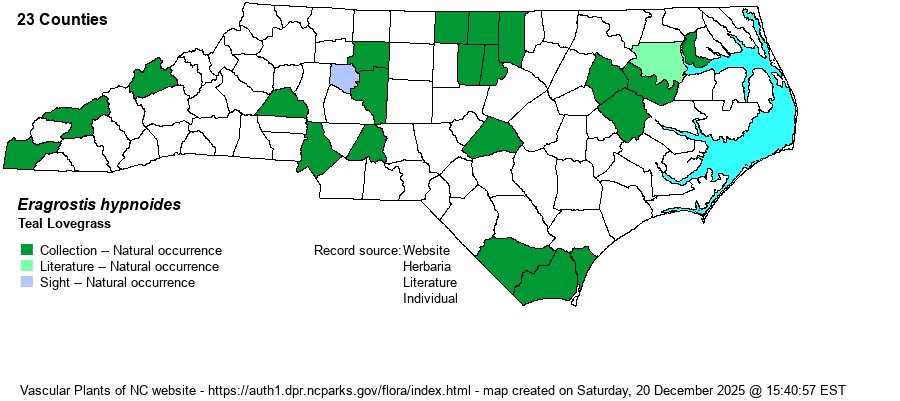| Author | (Lamarck) Britton, Sterns, & Poggenburg | |
| Distribution | In scattered locations across the state. No doubt occurs in many other counties, as in VA it is found in over half of their counties.
Que. to Sask. south to FL, TX, and CA; Mex., W.I., C.A., S.A. | |
| Abundance | Apparently rare in the Mountains, uncommon elsewhere. Owing to a roughly statewide range, the website editors suggest a State Rank of S3, instead of the NCNHP's rank of S2?. | |
| Habitat | Sandy, clayey, or muddy shores of rivers and streams; exposed margins of impoundments; freshwater marshes. This is essentially an obligate wetland species in NC. | |
| Phenology | Flowering and fruiting May-September. Flowering is highly dependent on low water levels. | |
| Identification | In this species, the stems sprawl radially on the ground and root at the nodes, connecting to other plants via horizontal stolons. The terminal portions of the stems become essentially erect and produce small inflorescences. The spikelets are narrow and tightly packed with 12-35 florets. At a distance this species looks in the field like a flatsedge of the genus Cyperus. | |
| Taxonomic Comments | None
Species in the genus Eragrostis -- the lovegrasses -- often have inflorescences that are larger than the rest of the plant. Such inflorescences are very open and airy, but other species have more contracted inflorescences. Each spikelet is laterally compressed and contains few to many florets, which lack awns. | |
| Other Common Name(s) | Creeping Lovegrass | |
| State Rank | S2? [S3] | |
| Global Rank | G5 | |
| State Status | | |
| US Status | | |
| USACE-agcp | OBL link |
| USACE-emp | OBL link |

